A couple of years ago, on a press tour of NASA’s Johnson Space Center (JSC), one of the lead engineer’s of the Orion capsule told me that radiation shielding was a technical challenge they had yet to figure out. The Orion capsule is being developed to carry astronauts to Mars and back. Humans on Mars advocates think the radiation problem can be easily addressed, and I recently found out that the National Geographic Channel’s television series Mars uses a simple solution, water.

Inside a spacecraft on the journey to Mars in the National Geographic Channel’s Mars television series.
The Mars series on the National Geographic Channel chronicles the first manned journey to Mars. It begins in 2033, and is based on real science and efforts to get humans to Mars. In the first season, a crew was sent to bring a Martian base online and scout a location for a larger colony and begin construction. A second season is in the works.
The show features fictional drama, but also cuts away to present day scientists and space experts discussing where we are now in our pursuit to get to Mars and ideas on how we will tackle future challenges. As the show demonstrates, sending humans to Mars offers a variety of diverse challenges we have not faced in other space exploration projects.
Radiation is a larger concern for travelers to Mars than any other space pursuit we have taken on thus far. Radiation in space is dangerous because it can go right through the human body causing damage to cells or possibly even DNA. The Earth is protected from radiation by the magnetosphere, which is created by the Earth’s magnetic field. A NASA article describing the challenges radiation poses to trips to Mars describes the magnetosphere as a “huge magnetic bubble.” The international Space Station (ISS) is in orbit within this bubble, so it is largely protected.
According to Ruthan Lewis, an architect and engineer with the human spaceflight program at NASA's Goddard Space Flight Center in Greenbelt, Maryland, “The space radiation environment will be a critical consideration for everything in the astronauts’ daily lives, both on the journeys between Earth and Mars and on the surface.”
“You’re constantly being bombarded by some amount of radiation,” he added.
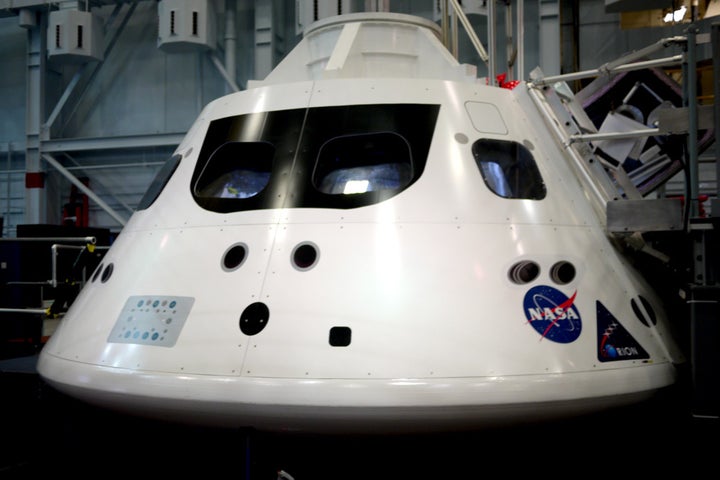
A mockup of the Orion crew capsule at NASA’s Johnson Space Center Space Vehicle Mockup Facility.
Dr. Robert Zubrin is an aerospace engineer and founder of the Mars Society, an organization that advocates for, and supports, private and public projects to send humans to Mars. When I told him what the NASA engineer told me, he said he disagreed radiation shielding was that big of a problem.
“There are two kinds of radiation that can get you in space. One is solar flares, which are indeed dangerous, but you can shield against them using provisions like food and that which you will necessarily have on the ship if you are going to Mars,” explained Zubrin.
“The other are cosmic rays, which are much more difficult to shield against because they are much more penetrating, but the amount you would get of them is predictable and it isn’t that large. It represents about a 1% risk of getting cancer on a round-trip Mars mission. If you consider the fact that the average American incurs a 20% chance of cancer by smoking, one would have to say that this is a modest portion of overall mission risk. So, I don’t see that as a major thing.”
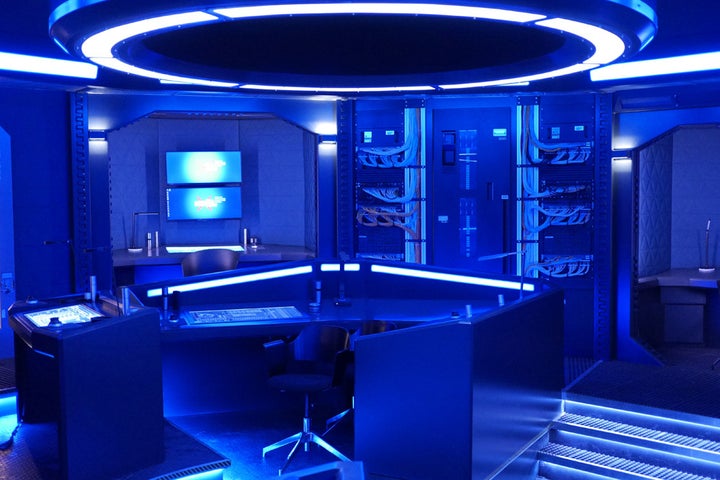
Inside a Martian base on the set of the second season of National Geographic Channel’s Mars television series.
Although Zubrin is much more optimistic about the effects of radiation during the trip, anyone staying on the surface will be further exposed. Mars does not have the “huge magnetic bubble” the Earth does, so a Martian base would need to be shielded. Now that we are at a point when organizations such as SpaceX are expecting to send humans to Mars within 10 years, it is important that a radiation shielding system be developed.
Although NASA has thought about it, they have not settled on a solution, at least at the time I asked. However, I was able to meet a group of people who have not only gone to Mars, but some of them live there. Well, at least on television. They have their own solution to the radiation shielding problem.
Writer Stephen Petranek is a technical consultant for the Mars television series. He has a popular TED talk and a book published by TED titled How We’ll Live on Mars. In the book, he tackles the problems and solutions for traveling to and colonizing Mars. His book inspired the Mars TV series.
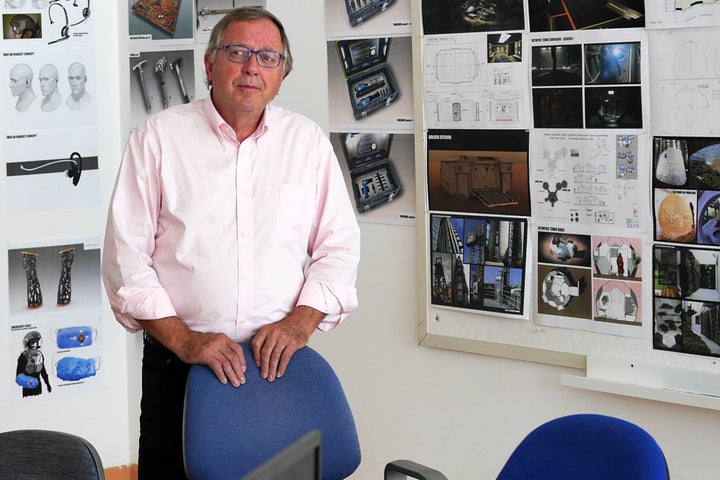
Stephen L. Petranek in the design center for the second season of Mars at Korda Studios in Hungary.
In his book, Petranek writes, “We have no technologies that can eliminate solar or cosmic radiation, but we can design emergency spaces in interplanetary vehicles that are specially shielded for events like solar flares.”
As for SpaceX, “Elon Musk [SpaceX founder, CEO and CTO] has proposed a spacecraft insulated by water,” writes Petranek.
Petranek was on hand during a press tour and sneak peak of the second season set of Mars outside of Budapest, Hungary at Korda Studios. We were able to meet with actors, producers, writers and set and costume designers.
I asked Petranek if they had incorporated a radiation shielding system in their spacecraft and Mars colony building designs for the show, and he said they had. Their solution, like many of their designs, was partially inspired by SpaceX. They incorporated a water reservoir in the outside walls of their structures they call a “water jacket.”
Petranek believes this is the simplest and most likely solution SpaceX and others will settle on. He explained that the water would serve as drinking water and when the Martian astronauts and colonists expelled their water waste, it would be reprocessed and replenish the reservoirs. I asked if it would be depleted over time, but he says it is a closed system, so it will always stay full. Every drop of water is recycled.
It sounds odd, and simple, and according to the NASA radiation article referenced above, NASA has also considered it.
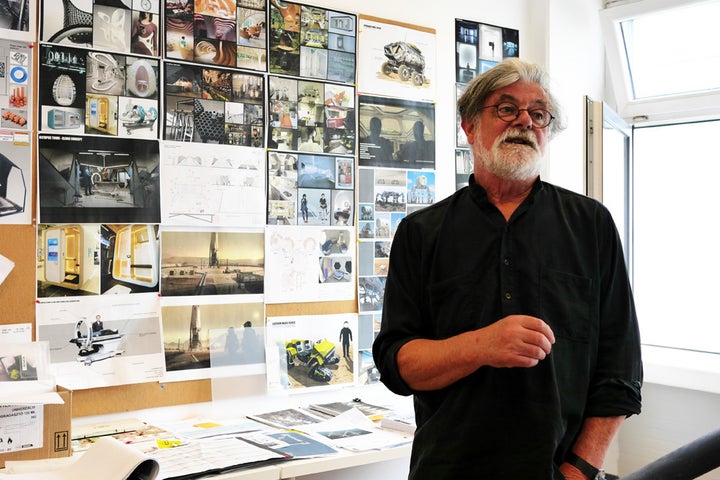
Adrian Smith, Mars second season production designer, at Korda Studios in Hungary.
“The best way to stop particle radiation is by running that energetic particle into something that’s a similar size,” said Jonathan Pellish, a space radiation engineer at Goddard. “Otherwise, it can be like you’re bouncing a tricycle off a tractor-trailer.”
An element whose size is just right is hydrogen, which is found in water.
NASA says, “Water, already required for the crew, could be stored strategically to create a kind of radiation storm shelter in the spacecraft or habitat. However, this strategy comes with some challenges—the crew would need to use the water and then replace it with recycled water from the advanced life support systems.”
According to an article in New Scientist titled “Mars trip to use astronaut poo as radiation shield,” a water shielding and recycling system has been tested on the ISS, and was expected to be used by a since defunct project to send people to Mars in January, 2018.
In 2013, the Inspiration Mars Foundation was formed and planned to send a manned spacecraft to Mars and back in 501 days. It was headed by Dennis Tito, the first space tourist to visit the International Space Station. However, the project never came to be.
Inspiration Mars planned to use a system called Water Walls, which consists of plastic bags of water that line the walls of crew quarters of a spacecraft. Upon launch, the bags will be full of fresh water. Once used, the empty bags will be filled with grey water (human waste). The bags will then use osmosis to draw out and filter water. All the while, the water and waste will act as a radiation shield.
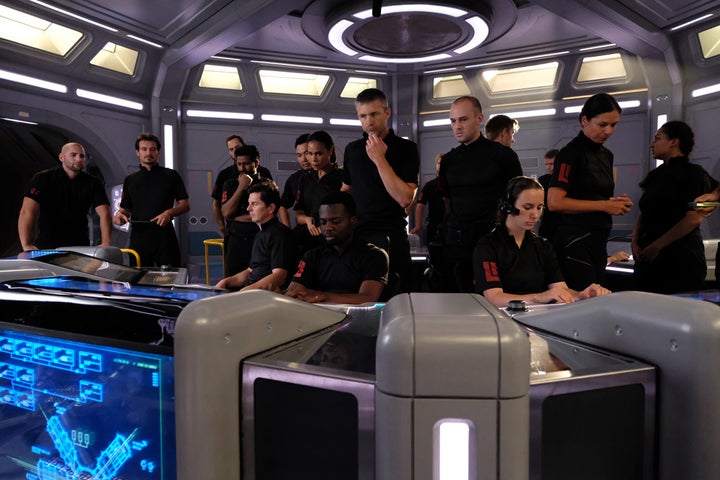
Martian colonists safely shielded from radiation in their Martian base in a scene from the second season of National Geographic Channel’s Mars.
According to New Scientist, the bags were tested on the Space Shuttle. The article states: “The urine-to-water processing bags were tested in orbit on the last ever flight of the space shuttle in 2011 and found to be 50 per cent less efficient in microgravity than in ground-based tests.”
We don’t know for certain if SpaceX will use a similar technology, or if they will really get to Mars in 2024 like Musk plans. However, the people on Mars now, or rather the actors who pretend to be on Mars now, are using a similar system.
At Korda Studios we were able to visit the design team, and Petranek showed me some of the building and spacecraft designs. He says although they do not address it specifically in the show, they did design a “water jacket” in the structures and craft.
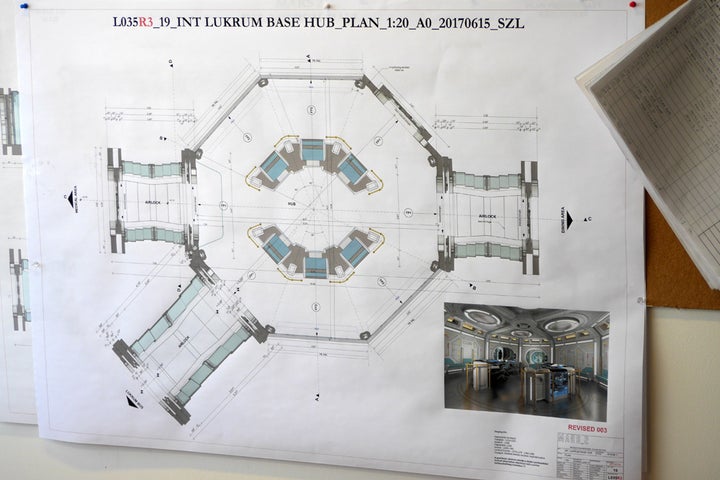
Design for Martian base for the second season of National Geographic’s Mars television series.
I was quite concerned when I was told at JSC that there was no plan for radiation shielding on the Orion capsule. However, Patranek and the National Geographic Channel have been able to allay my concerns. Now when I enjoy the upcoming second season of Mars on the National Geographic Channel, I will watch contentedly knowing the Martian colonists and space travelers are well protected from radiation in a most clever way. I should have never doubted. After all, clever innovations have always been a magnificent byproduct of the human pursuit to travel in space.
